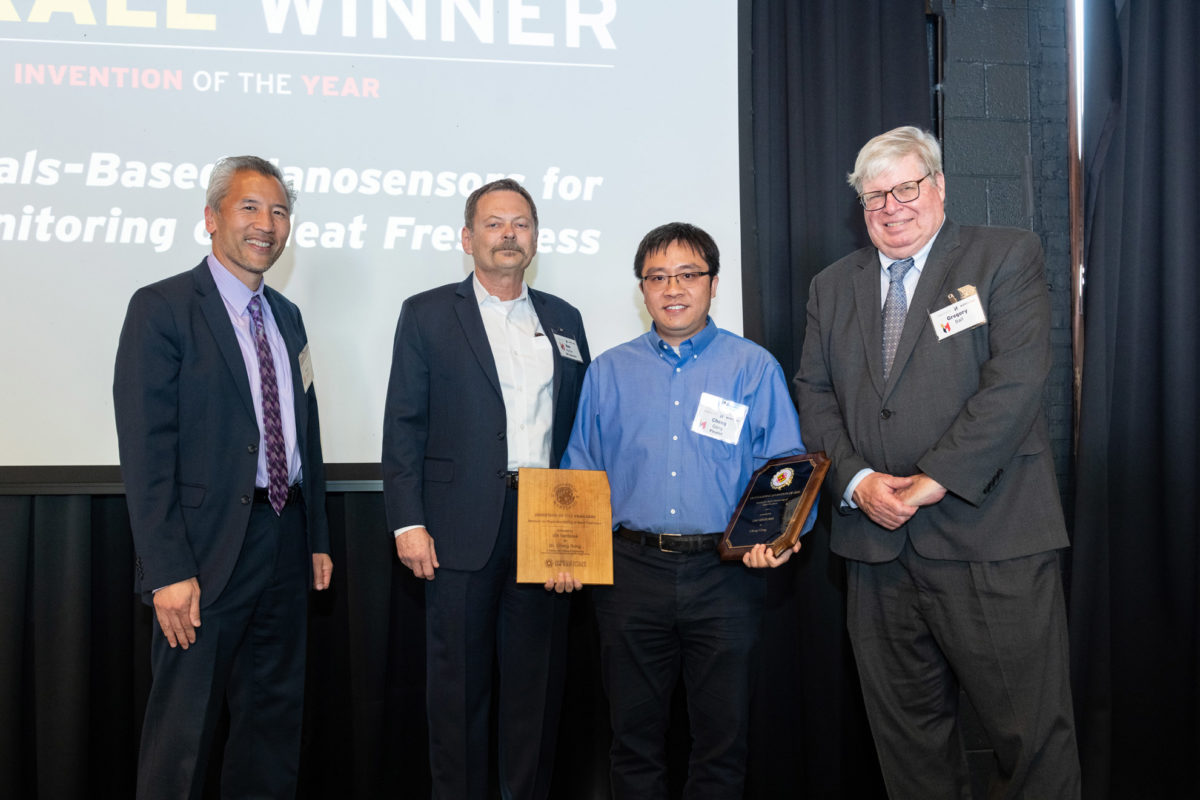Yesterday, 342 inventions were whittled down to 12 finalists and, ultimately, four winners of the University of Maryland‘s (UMD) Invention of the Year Awards.
The four awardees named during yesterday’s Innovate Maryland event — UM Ventures‘s annual celebration of commercial tech and science achievement throughout UMD’s campuses — exemplify the university’s ability to turn research at UMD’s College Park and Baltimore campuses (among other affiliate institutions) into “creative and exciting real-world products,” a statement said.
“We want to get products [based on] university research out for public use, for public good and for public benefit,” Felicia Metz, associate director of UM Ventures, told Technical.ly.
Here’s a list of who won and what they won for:
- Cheng Gong, an assistant professor at the University of Maryland College Park‘s A. James Clark School of Engineering, won the Overall Physical Sciences Invention of the Year award for what the statement called “2D Materials-Based Nanosensors for Rapid Monitoring of Meat Freshness.” The technology allows stores, warehouses, and other users to accurately determine the freshness of meat based on its gas emissions.
- The COVID-19 Research Invention of the Year award went to “Mucosal Vaccination Against 2019-nCoV Infection and Other Infections,” which was jointly created by professor Xiaoping Zhu, assistant research professor Weizhong Li and faculty assistant Tao Wang of the Virginia-Maryland College of Veterinary Medicine and UMD’s College of Agriculture and Natural Resources at UMD. The team invented a nasal protein vaccination strategy to block viral shedding and transmission from person to person. Because it is protein-based and noninvasive, it can be administered to people of all ages as either a primary vaccination or a booster.
- The “Vehicle-Based Anomaly Detection Using Artificial Intelligence and Combined Environmental and Geophysical Sensor Data” project from UMD physicist Daniel Lathrop, associate professor of geology Vedran Lekić and doctoral student Heidi Myers was named the Information Sciences Invention of the Year. The product maps geophysical anomalies by coupling geophysical and environmental remote sensing with unmanned vehicles. The team aimed to prevent injuries from 110 million buried landmines and other explosive remnants of war across the world.
- “Suture-free Repair for Surgery, Cuts and Wounds,” invented by Clark School of Engineering professor Srinivasa Raghavan and doctoral student Leah K. Borden, earned the Life Sciences Invention of the Year award. The chemical and biomolecular engineering duo created a biocompatible polymer gel to streamline the suturing process and transcend traditional needle-and-thread mechanics.
Learn more about the various winners and their fellow finalists, who were all celebrated during yesterday’s event in College Park, on Innovate Maryland’s website.
Donte Kirby is a 2020-2022 corps member for Report for America, an initiative of The Groundtruth Project that pairs young journalists with local newsrooms. This position is supported by the Robert W. Deutsch Foundation.Join our growing Slack community
Join 5,000 tech professionals and entrepreneurs in our community Slack today!
Donate to the Journalism Fund
Your support powers our independent journalism. Unlike most business-media outlets, we don’t have a paywall. Instead, we count on your personal and organizational contributions.

These 10 regions could be most impacted by federal return-to-office mandates

From Belgaum to Baltimore and beyond, this founder leaned on family to build a biotech juggernaut

Philly vs. Kansas City: Who’s got the stronger tech economy?


